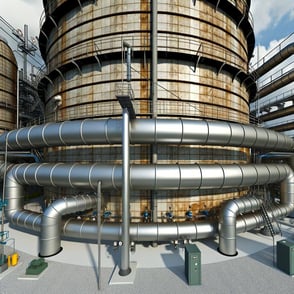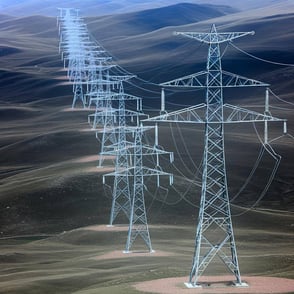Lignite-Fired Energy Generation
Lignite, or brown coal, is a low-energy, high-moisture coal used in power generation. Despite economic benefits, it has significant environmental drawbacks due to high CO2 emissions.
What is Lignite?
Lignite, often referred to as brown coal, is a type of coal known for its lower energy content and carbon concentration compared to other forms of coal like bituminous and anthracite. Lignite is formed from naturally compressed peat and is considered the lowest rank of coal due to its relatively young geological age. Despite its lower efficiency in terms of energy production, lignite remains an important fuel source, particularly in regions where it is abundantly available and economically viable to mine.How Lignite-Fired Energy Generation Works
The process of generating electricity from lignite follows several key steps, similar to other coal-fired power generation methods, but with some differences due to its unique properties. First, lignite is typically extracted from surface mines because it is located closer to the earth’s surface compared to other types of coal. Once mined, it is transported to power plants. Lignite has a high moisture content, often up to 60%, which makes it less efficient to burn. Therefore, it is first crushed into a fine powder and then dried to remove excess moisture.
The dried, powdered lignite is then blown into a boiler where it burns at high temperatures. The heat generated from combustion converts water in the boiler's pipes into steam. This high-pressure steam flows from the boiler to a turbine, where its force rotates the turbine blades. The turbine is connected to a generator, and as the turbine blades turn, they spin the generator, converting mechanical energy into electrical energy. Modern lignite power plants are equipped with technologies to reduce emissions of sulfur dioxide (SO2), nitrogen oxides (NOx), and particulate matter. These include scrubbers, electrostatic precipitators, and selective catalytic reduction systems. Finally, the generated electricity is transmitted through power lines to homes, businesses, and industries.

Impact of Lignite-Fired Energy on the Energy Sector
Lignite plays a significant role in the energy sector, particularly in countries with abundant lignite reserves. Lignite mining and power generation provide substantial economic benefits, including job creation and contributions to local economies. Regions with large lignite deposits often rely heavily on the industry for economic stability. Lignite contributes to energy security by providing a domestically available fuel source, reducing reliance on imported energy, and enhancing the stability of the energy supply.
However, the environmental impact of lignite is considerable. Just like other forms of coal, the combustion of lignite releases a significant amount of carbon dioxide (CO2), a greenhouse gas that contributes to climate change, along with pollutants such as mercury and sulfur compounds, which can adversely affect air quality and public health. Efforts to mitigate the environmental impact of lignite include the development of cleaner combustion technologies and carbon capture and storage (CCS) systems. These advancements aim to make lignite power generation more efficient and environmentally friendly. As the world shifts towards cleaner energy sources, the role of lignite in electricity generation is under scrutiny. Many countries are investing in renewable energy and natural gas to reduce their dependence on lignite and other coal types.
Conclusion
Lignite, or brown coal, has been a crucial part of the energy sector in many regions due to its availability and economic benefits. However, its lower energy content and higher environmental impact pose significant challenges. The future of lignite energy generation will depend on balancing energy demand, environmental concerns, and advancements in cleaner technologies. As the global energy landscape evolves towards sustainability, the role of lignite is expected to diminish, making way for renewable and lower-carbon energy sources.
Glossary
- Boiler: A device used to generate steam by heating water with fuel combustion.
- Carbon Capture and Storage (CCS): A technology designed to capture and store CO2 emissions from power plants and industrial sources to prevent them from entering the atmosphere.
- Combustion: The process of burning a fuel to produce heat and energy.
- Electrostatic Precipitator: A device that removes particulates from exhaust gases by using electrical charges.
- Greenhouse Gas: Gases in the Earth's atmosphere that trap heat, contributing to global warming. CO2 is a primary greenhouse gas.
- Lignite: Also known as brown coal, it has the lowest energy content and carbon concentration among coal types, primarily used in electricity generation.
- Scrubber: A system used to remove pollutants from industrial exhaust streams.
- Steam Turbine: A machine for generating rotary mechanical power by using steam to drive turbine blades.
- Transmission: The process of transporting electricity from power plants to end users through power lines.
.png?width=200&height=80&name=etpa-logo-color%20(1).png)































.png)
.png)
-1.png?width=250&height=100&name=etpa-logo-color%20(1)-1.png)